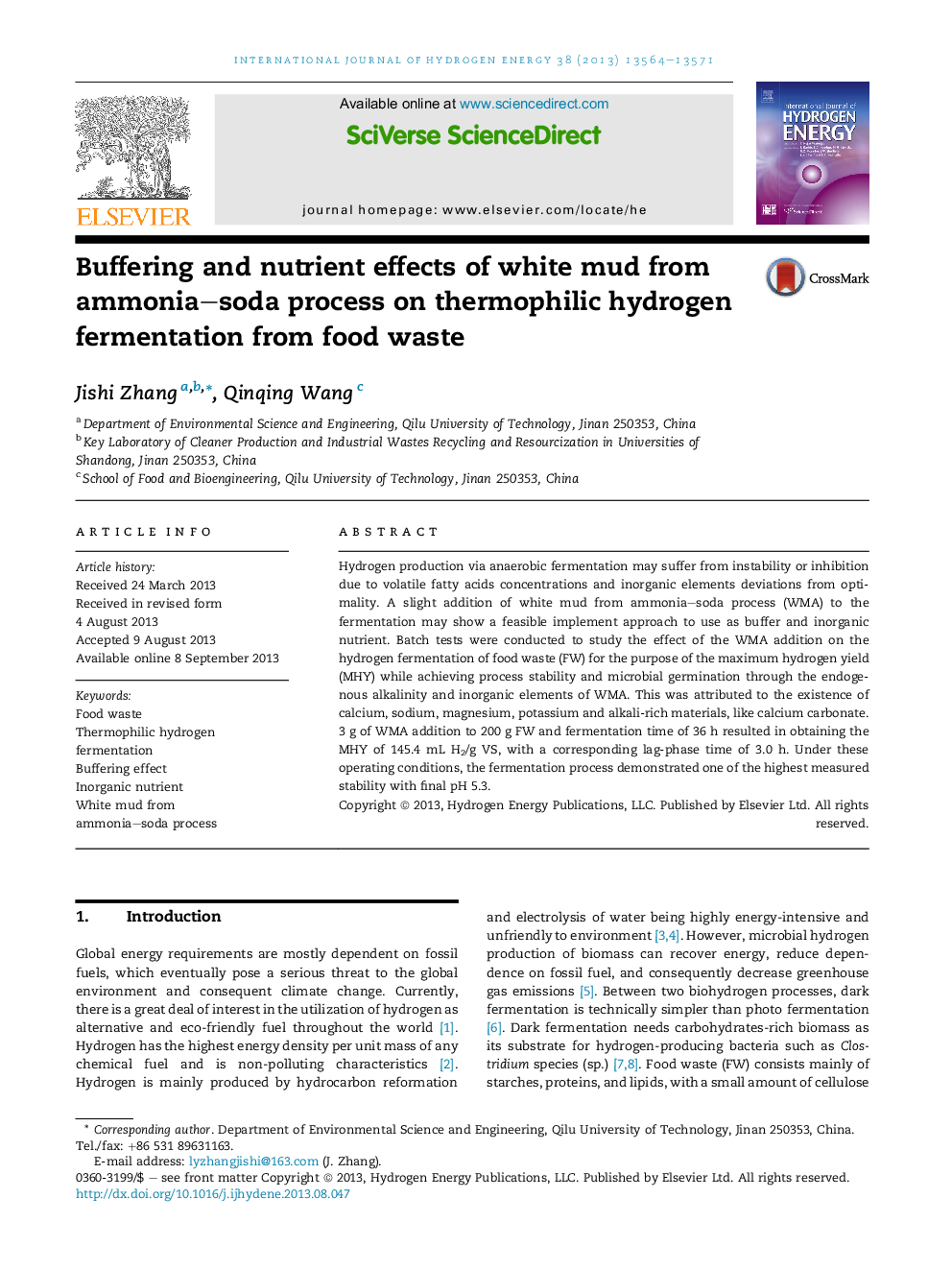| Article ID | Journal | Published Year | Pages | File Type |
|---|---|---|---|---|
| 7721100 | International Journal of Hydrogen Energy | 2013 | 8 Pages |
Abstract
Hydrogen production via anaerobic fermentation may suffer from instability or inhibition due to volatile fatty acids concentrations and inorganic elements deviations from optimality. A slight addition of white mud from ammonia-soda process (WMA) to the fermentation may show a feasible implement approach to use as buffer and inorganic nutrient. Batch tests were conducted to study the effect of the WMA addition on the hydrogen fermentation of food waste (FW) for the purpose of the maximum hydrogen yield (MHY) while achieving process stability and microbial germination through the endogenous alkalinity and inorganic elements of WMA. This was attributed to the existence of calcium, sodium, magnesium, potassium and alkali-rich materials, like calcium carbonate. 3 g of WMA addition to 200 g FW and fermentation time of 36 h resulted in obtaining the MHY of 145.4 mL H2/g VS, with a corresponding lag-phase time of 3.0 h. Under these operating conditions, the fermentation process demonstrated one of the highest measured stability with final pH 5.3.
Keywords
Related Topics
Physical Sciences and Engineering
Chemistry
Electrochemistry
Authors
Jishi Zhang, Qinqing Wang,
